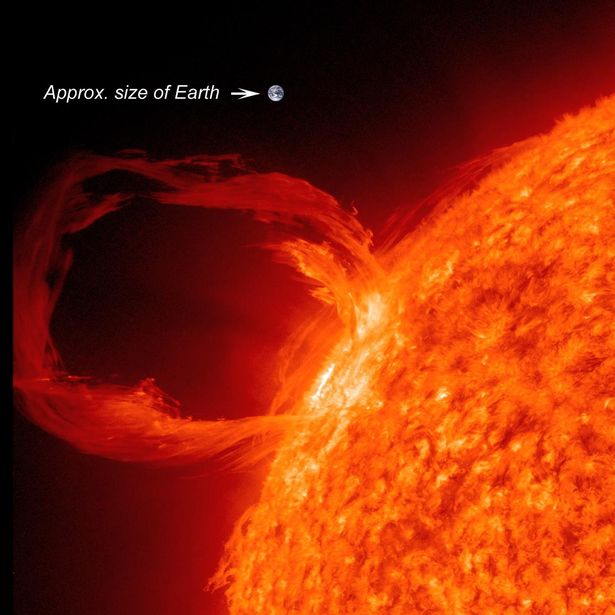NASA has spotted a gigantic solar flare that will strike our planet today.
Two gigantic solar flares erupting from the sun have been recorded by NASA.
The space agency has said the resulting solar storm could strike Earth today and tomorrow and may disrupt satellites and cause power outages in some places.
However, the charged particles that make up the solar storm could create stunning views of the Northern Lights as they interact with our atmosphere.
Timing is a crucial factor.
The arrival of the solar storm coincides with the formation of ‘equinox cracks’ in Earth’s magnetic field, which form around the equinoxes on March 20 and September 23 each year.
It could mean technology such as GPS satellites are more susceptible to the incoming magnetic particles.
“A minor geomagnetic storm watch is now in effect for the 14 and 15 March, 2018. Aurora may be visible at high latitudes,” the US National Oceanic and Atmospheric Administration (NOAA) wrote in a statement.
A G1 Watch is in effect for the 14 & 15 March, 2018 UTC-days. Enhancements in the solar wind due to the anticipated effects of a coronal hole high speed stream (CH HSS) are expected to cause the escalated geomagnetic responses. Visit https://t.co/dimAHi8BFd for the latest info. pic.twitter.com/doJIzMWaGe
— NOAA Space Weather (@NWSSWPC) March 12, 2018
The particles, which came from the sun after solar flares took place on March 6 and 7, could cause ‘weak power grid fluctuations’ and a “minor impact on satellite operations,” according to the NOAA.
Nasa said the first of the two flares – classified in the potent X class and facing directly at the Earth – was the biggest this year.

Forecasters are only able to predict large space storms, which can cause huge power outages and disrupt our communications systems, just 19 hours ahead.
Space weather is caused by the behaviour of the sun and can occur in the form of radiation storms, solar flares and, the one to worry about, coronal mass ejections – which sends scores of solar material into space, and sometimes hurtling towards Earth.
These all modify the Earth’s atmosphere and magnetic field, affecting our technology, satellites and disrupting our power supply – potentially leaving large areas of the world paralysed.

The Northern Lights will be occurring to the north of the UK, so make sure you have a good view of the northern horizon.
Quite often, going to beaches, headlands or the top of hills is very good, but if can get to somewhere in Scotland, even the Shetland Isles, then that would be the best bet.












